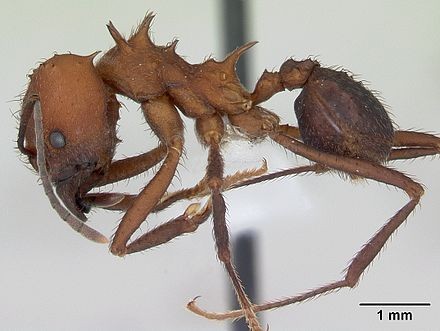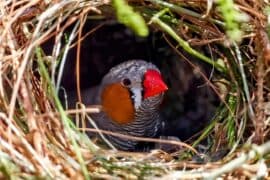Acromyrmex landolti
(Acromyrmex landolti)

Description
Acromyrmex landolti is a species of leaf-cutter ant, a New World ant of the subfamily Myrmicinae of the genus Acromyrmex. This species is from one of the two genera of advanced attines (fungus-growing ants) within the tribe Attini. Acromyrmex is a genus of New World ants of the subfamily Myrmicinae. This genus is found in South America and parts of Central America and the Caribbean Islands, and contains 33 known species. Commonly known as "leafcutter ants" they comprise one of the two genera of advanced attines within the tribe Attini, along with Atta. Acromyrmex species' hard outer covering, the exoskeleton or cuticle, functions as armour, protection against dangerous solar waves, an attachment base for internal muscles, and to prevent water loss. It is divided into three main parts; the head, thorax, and abdomen. A small segment between the thorax and abdomen, the petiole, is split into two nodes in Acromyrmex species. The antennae are the most important sense organs Acromyrmex species possess, and are jointed so the ant can extend them forward to investigate an object. It can retract them back over its head when in a dangerous situation, for example, a fight. Acromyrmex species have eyes, but their eyesight is very poor. Like all insects, the eye is compound, meaning it is made up of many eyelets called ommatidia, with the number of these eyelets varying according to species. Male ants tend to have more ommatadia than other castes. The ocelli, which are generally found on top of the heads of queens, are thought to aid aerial navigation by sunlight. Acromyrmex is dark red in colour. In addition to the standard ant anatomy, the back of the thorax has a series of spines which help it manoeuvre material such as leaf fragments on its back. Acromyrmex can be distinguished from the closely related leafcutter ant genus Atta by having four pairs of spines and a rough exoskeleton on the upper surface of the thorax compared to three pairs of spines and a smooth exoskeleton in Atta. Much of the inside of the Acromyrmex head is occupied by the muscles that close the jaws; the muscles that open the jaws are much smaller. The brain, though tiny, is a very complex organ, and allows Acromyrmex to learn and react to its surroundings. It can remember colony odour, navigation, and where it has placed a certain object. The heart is a long, tubular organ running the entire length of the body, from the brain to the tip of the abdomen.
Taxonomic tree:







